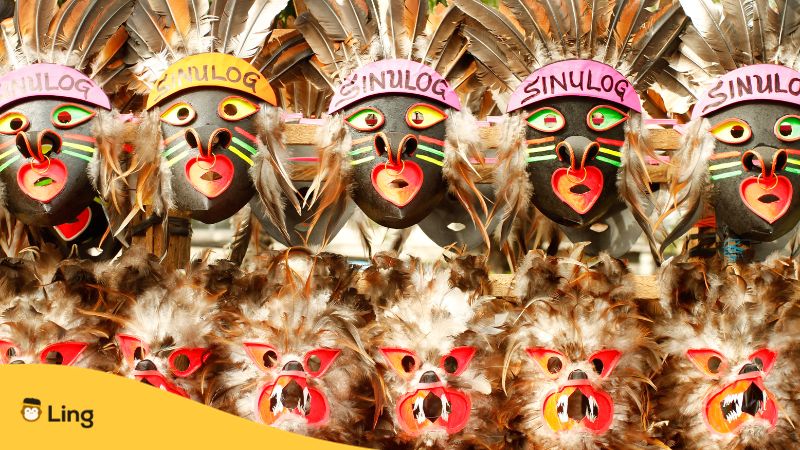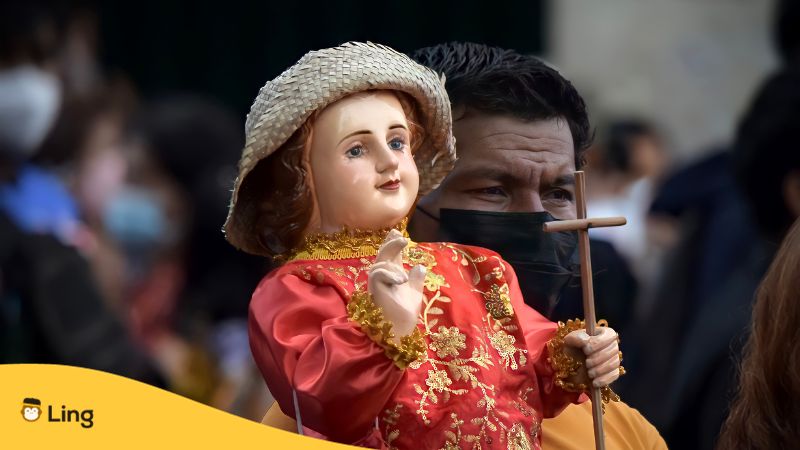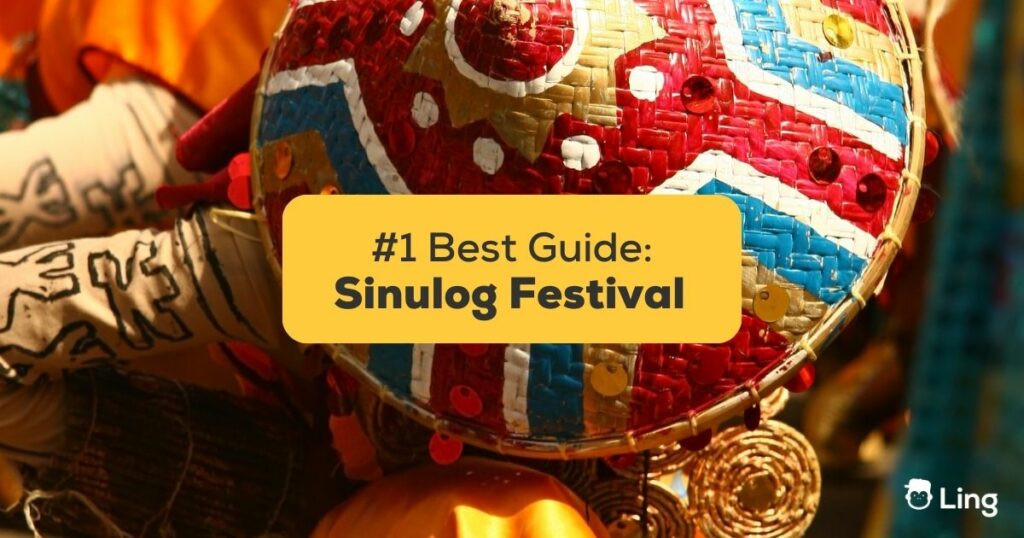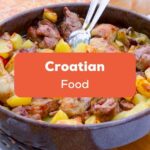Ever found yourself lost in daydreams, imagining the feel of sun-kissed skin, the sound of rhythmic drumbeats echoing in the distance, or the sight of Tagalog people, each one dancing as if they’re narrating their own unique story? That was me, every time I heard about the Sinulog Festival. This isn’t just any festival; it’s a rhythmic heartbeat, a soulful journey, a cultural tapestry that weaves tales of faith, history, and unparalleled celebrations.
Actually, it is one of the Philippines’ most grand and colorful festivities held annually in Cebu City. It is a spectacle that has always been on my bucket list. And if you’ve ever longed to be a part of a celebration so grand, so infectious that it stays with you long after it’s over, then come along as we delve into the magic of Sinulog.
What Is Sinulog Festival Celebrated For?
The Sinulog Festival isn’t just a vibrant display of colors, dances, and rhythmic beats; it carries a profound significance rooted deeply in Filipino history and faith. But what exactly does this grand fiesta celebrate?
The Sinulog Festival commemorates the Filipino people’s conversion to Christianity, particularly the Roman Catholic faith. This cultural transformation dates back to the early days of Spanish exploration. When the Spanish explorers, led by Ferdinand Magellan, arrived in the Philippines in the 16th century, they brought with them an image of the Santo Niño, or the child Jesus. This statue was presented as a baptismal gift to Hara Amihan, wife of Rajah Humabon, the Cebuano chieftain at that time. The conversion was not just symbolic but marked the beginning of Christianity in the archipelago.
At its core, the Sinulog Festival is a religious celebration. The festival pays homage to the Santo Niño, considered the patron saint of Cebu City. Every year, the devout showcase their unwavering faith and gratitude by participating in church services, processions, and other devotional activities centered around the revered image of Santo Niño. The dance performances that are synonymous with Sinulog echo the Filipinos’ tales of their faith journey. The rhythmic two-step forward, one-step backward dance motion imitates the sulog or river’s current, symbolizing the flowing grace of the Santo Niño in their lives.

What Is The Cultural Importance Of Sinulog?
The dance routines performed during Sinulog are not mere performances; they are stories being told. Each movement, each rhythm, narrates tales of the Filipino people’s ancestry, their struggles, victories, faith, and their unwavering bond with their homeland. The dance imitating the sulog, or river’s current, for instance, not only symbolizes the flowing grace of the Santo Niño but also encapsulates the fluid nature of Filipino culture, always evolving yet firmly anchored in its roots.
The festival is also culturally relevant because it serves as a grand stage for local artisans to showcase their talents. From the intricately designed costumes and accessories to the handcrafted musical instruments, Sinulog shines a spotlight on Filipino craftsmanship. Every mask, every piece of jewelry, and every float tells a story of the hands that crafted them and the traditions they uphold.
Lastly, Sinulog is viewed as a unifying force. In a country spread across numerous islands with various dialects and local customs, this festival brings Filipinos together in a shared celebration. It reinforces community spirit, as people from different backgrounds collaborate to organize events, participate in parades, and engage in friendly competition, all while showcasing their shared heritage.

What Is The Main Event Of The Sinulog Festival?
The Grand Parade is the climactic event of the Sinulog Festival in Cebu. Typically held on the third Sunday of January, this parade transforms Cebu City into a vibrant sea of colors, music, and dance. Drawing participants from various regions of the Philippines and even international dance troupes, this event is a spectacle like no other.
Dance contingents, dressed in brilliantly hued costumes, form the heart of the parade. These groups practice for months, perfecting their choreography and ensuring every step, every gesture tells the story of their dedication to the Santo Niño. Floats, adorned with intricate designs and often carrying larger-than-life representations of the Santo Niño or other religious figures, add grandeur to the procession.
And, of course, no parade is complete without its pulse, its rhythm. The Sinulog Grand Parade pulsates with the beats of drums, the clang of gongs, and the melodic tunes of other traditional instruments. Bands and musicians accompany the dance contingents, ensuring the streets of Cebu City echo with a symphony that resonates long after the parade concludes.
Beyond the religious fervor, the Grand Parade is also an exhibition of Filipino culture and regional diversity. Participants often incorporate elements from their local traditions, giving spectators a glimpse into the rich tapestry of Filipino customs and practices.
When And Where Is Sinulog Festival?
The Sinulog Festival is an annual event celebrated on the third Sunday of January. This grand fiesta takes place in Cebu City, located in the Central Visayas region of the Philippines. As the festival draws near, the entire city buzzes with anticipation, preparations, and pre-festival events, making the whole month of January a vibrant and festive period in Cebu.
Cebuano vs. Tagalog: The Linguistic Flavor Of Sinulog
At the heart of the Sinulog Festival in Cebu City, the predominant dialect spoken is Cebuano (also known as Bisaya or Binisaya), not Tagalog, which is more widely recognized as one of the major languages of the Philippines. Therefore, during Sinulog festivities, you’ll often hear songs, chants, and conversations predominantly in Cebuano. This rich linguistic backdrop adds a unique regional touch to the festival, setting it apart from other national celebrations.
To give you a taste of the linguistic differences:
- Thank you
- Tagalog: Salamat
- Cebuano: Salamat (Yes, they’re the same!)
- Good Morning
- Tagalog: Magandang Umaga
- Cebuano: Maayong Buntag
- How are you?
- Tagalog: Kamusta ka?
- Cebuano: Kumusta ka?
- Water
- Tagalog: Tubig
- Cebuano: Tubig (Another similarity!)
- Friend
- Tagalog: Kaibigan
- Cebuano: Higala
While both languages have some shared words, due to historical and cultural intersections, they are distinct in their essence. When attending Sinulog, embracing the Cebuano dialect not only enhances the authenticity of the experience but also brings one closer to the heart and soul of Cebu’s people.
Learn Tagalog With Ling
The Sinulog Festival stands as a radiant testament to the Philippines’ rich cultural tapestry, blending history, faith, dance, and music into a mesmerizing celebration. The linguistic nuances, with Cebuano reigning supreme in the heart of Cebu City, only add to the festival’s distinct flavor, offering a genuine glimpse into the regional character of the Visayas. While immersing oneself in the Sinulog festivities, understanding the local dialect can truly enhance the experience.
However, if you’re inspired to delve deeper into Filipino culture and want to start with the national language, Tagalog, there’s a convenient way to begin your linguistic journey. Download the Ling app from the App Store or Play Store now, and embark on an enriching path to learning Tagalog, bridging the gap between you and the heart of Filipino culture.



































































